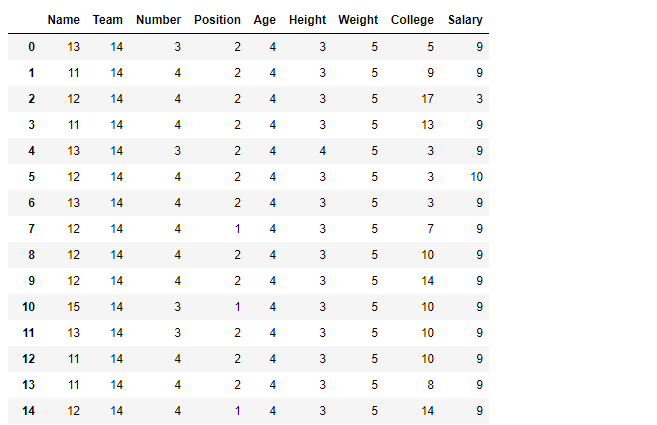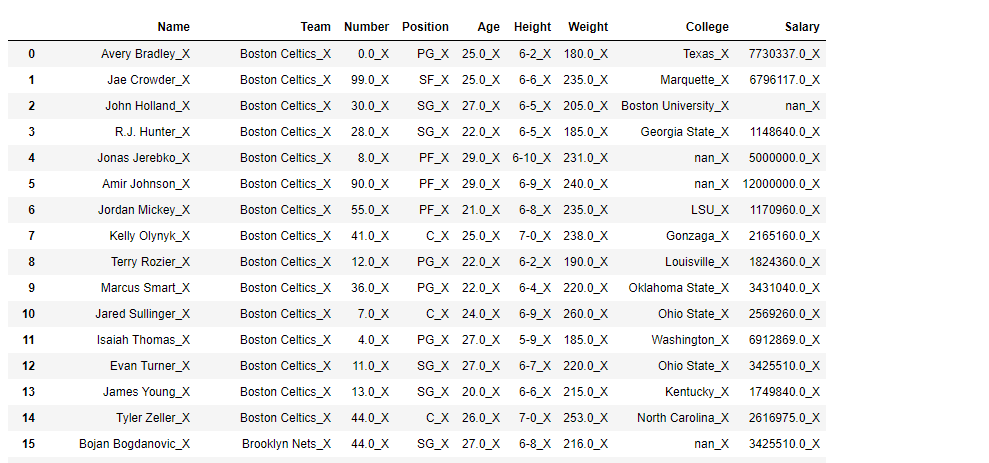Python | Pandas dataframe.applymap()
Last Updated :
16 Nov, 2018
Python is a great language for doing data analysis, primarily because of the fantastic ecosystem of data-centric python packages. Pandas is one of those packages and makes importing and analyzing data much easier.
Dataframe.applymap() method applies a function that accepts and returns a scalar to every element of a DataFrame.
Syntax: DataFrame.applymap(func)
Parameters:
func: Python function, returns a single value from a single value.
Returns: Transformed DataFrame.
For link to CSV file Used in Code, click here
Example #1: Apply the applymap() function on the dataframe to find the no. of characters in all cells.
import pandas as pd
df = pd.read_csv("nba.csv")
df[:10]
|

df.applymap(lambda x: len(str(x)))
|
Output:

Notice how all nan value has been converted to string nan and their length is evaluated to be 3.
Example #2: Append _X in each cell using applymap() function.
In order to append _X in each cell, first convert each cell into a string.
import pandas as pd
df = pd.read_csv("nba.csv")
df.applymap(lambda x: str(x) + '_X')
|
Output:

Like Article
Suggest improvement
Share your thoughts in the comments
Please Login to comment...